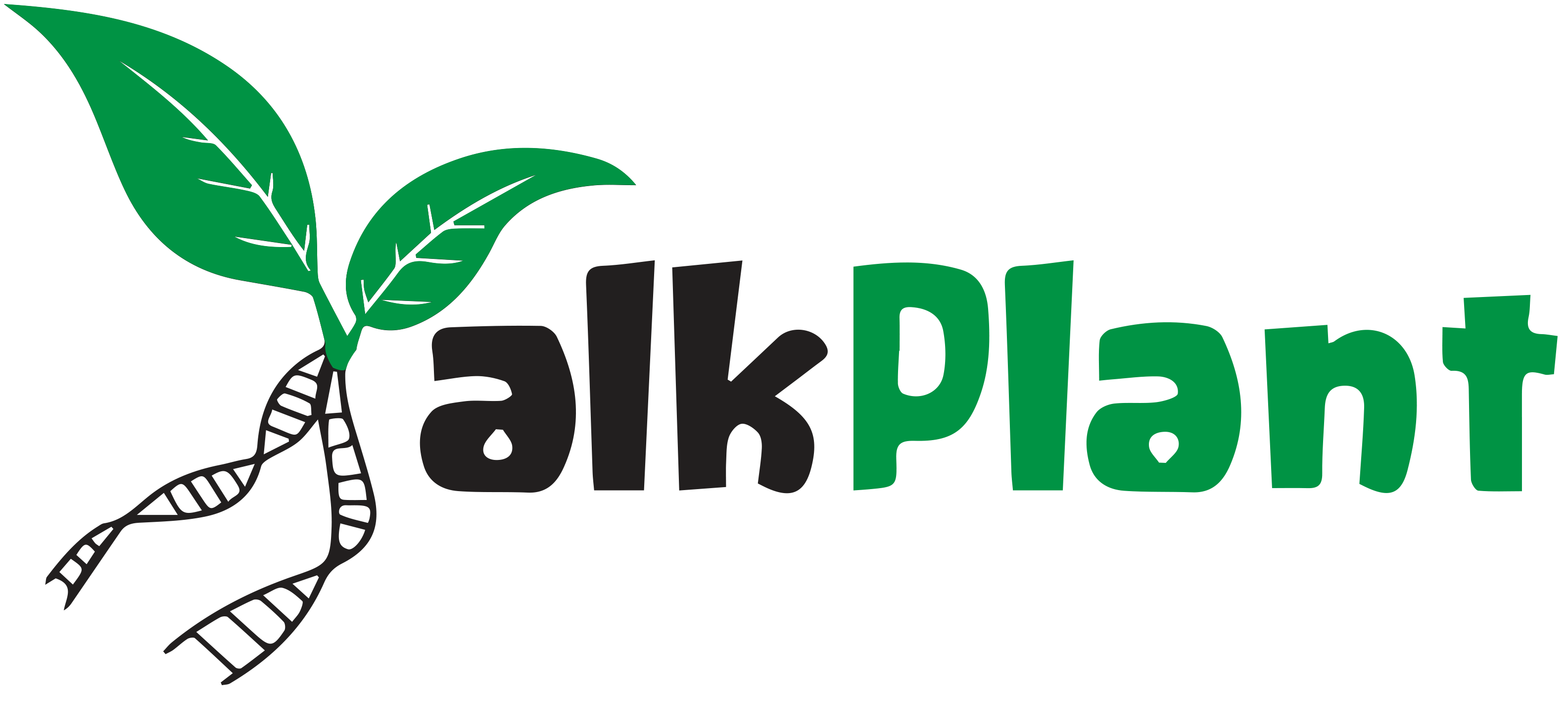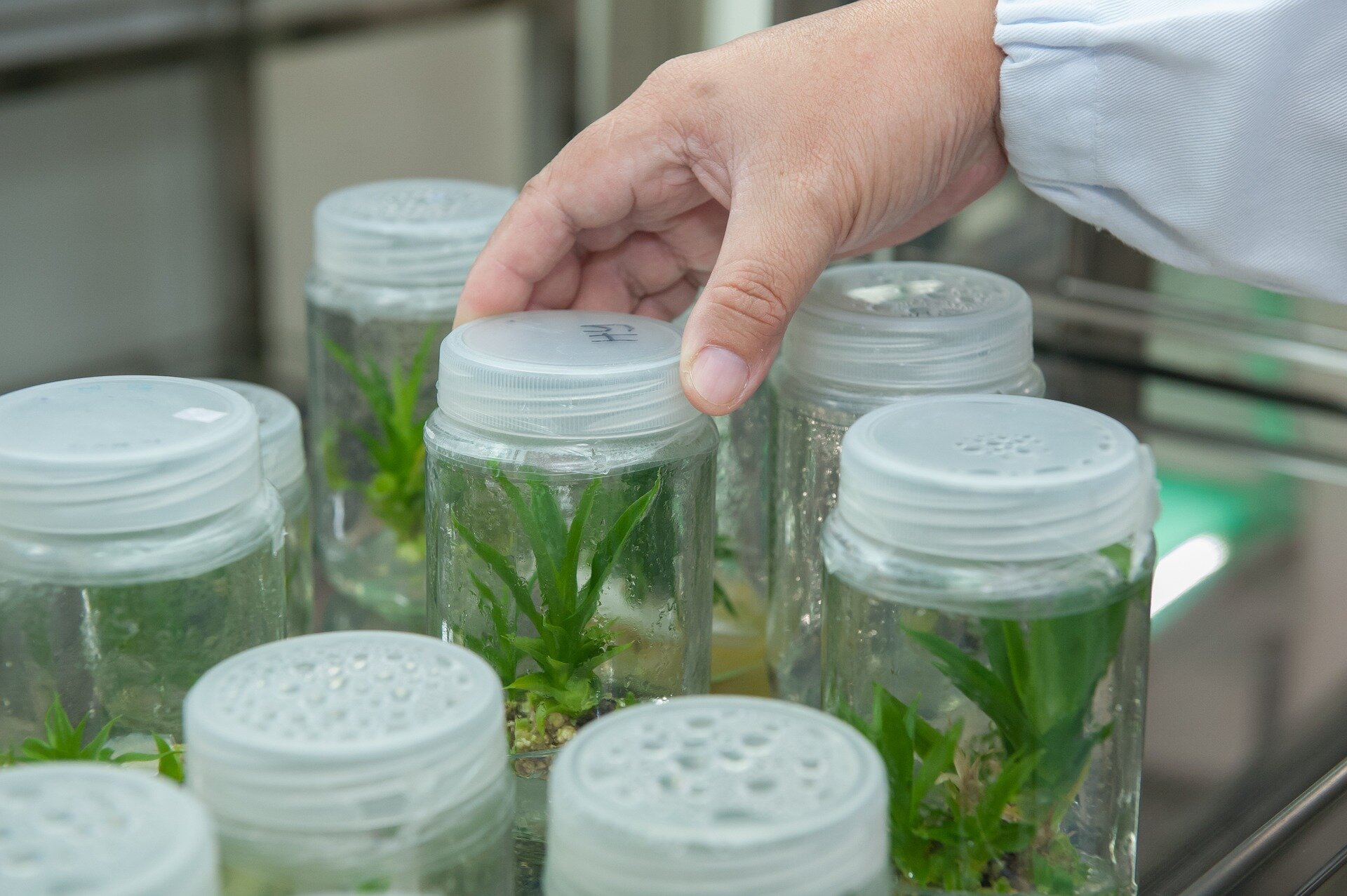Agriculture takes up approximately 38% of the total land on earth. This figure has been relatively stable since a rapid growth of agriculture in Asia throughout the 80s and early 90s. In fact, there has been a slight decrease in agricultural land recently. These statistics make it seem like meeting the world food demands is plain sailing.
The remaining land area includes expanding deserts, while a surging population is grabbing remaining land. As I’ve shown in the graph below, the world population has doubled since 1970, while there has only been a 9% increase on the total land used for agriculture (35% to 38%). The gap between the blue line (representing agriculture land) and the red line (representing world population) has tripled since 1970.

Given the rise in global population, we need to produce at least two times more food today than in 1970 to feed the world. Meat consumption has also tripled during this period, so some arable lands are used solely for animal grazing. Other problems with traditional farming include effects of extreme weather events, threats of plant diseases, heavy use of pesticides and fertilisers leading to soil depletion. It’s blatantly evident that meeting food demand with current resources is anything but plain sailing.
Since our ancestors migrated out of Africa around hundred thousand years ago, we’ve saturated horizontal exploration. Now there is barely an inch of uncharted territory or an area that isn’t used for human activities. The process of digging, sowing seeds, watering, removing weeds and harvesting is a core farming practice that our ancestors started since the first agricultural revolution approximately twelve thousand years ago. Ever since then, barring a few technological inputs, we’ve been farming using the same principles. This process is becoming increasingly unsustainable and inefficient, and as we begin to exhaust horizontal spaces in farming, we need to start looking for alternatives. Agriculture is begging for a radical redesign of practice to support conventional farming. We need to explore all tools and tech available to us in order to move towards sustainable, productive farming. On a positive note, indoor farming could remove most of these barriers that conventional farmers face each day.
38% land is used for agriculture yet we're struggling to feed increasing global population. We must use all available BioTech to beat hunger https://t.co/Xzb6Lnb9Pv
— Rupesh Paudyal (@TalkPlant) August 24, 2017
Growing indoor
A majority of indoor farming is set up in high-tech greenhouses with tightly regulated temperature, light and humidity. Controlled conditions of indoor farms eliminate the effects of extreme weather events such as drought and floods, and seasonal crops can be grown all year round. Growing in greenhouses also reduces the risk of disease and insect infestation. Farming at a high density in controlled indoor spaces could also allow farmland recover reducing soil depletion.
Another advantage of growing in greenhouses is that they can be built anywhere in the world. Unlike outdoor farming, indoor farming can grow produce in the arid, barren lands. The Sundrop Farms in Australia has done exactly that and much more. Using the solar energy, they’ve found a sustainable way of transforming seawater into freshwater, and use it in a hydroponic system to grow food. Hydroponics is a popular alternative, indoor farming technology usually set up in greenhouses. Instead of growing plants on soil, in hydroponic farming, roots are exposed to a “nutrient solution” containing all essential supplements needed for plant growth. The quantity and exposure of the nutrient solution can be strictly controlled as required for optimal growth.

Nutrient solutions in hydroponic systems require regular replacement to ensure maximum productivity. The hydroponic waste, rich in nitrogen and phosphorus, is often dumped into the environment. And, if they run-off to the waterways then it may cause contamination. In principle, it could have a similar effect to the contamination caused by excess use of fertilisers in conventional farming. Here, excess nutrients namely nitrogen and phosphorus leach to waterways enabling algal blooms that use up oxygen in oceans and lakes, and choke aquatic lives to death. However, there are several ways to reuse the nutrient solution in hydroponics.
A major limiting factor in agriculture is water. Conventional farming methods 70% of the total freshwater available to us. Increasing worldwide drought spells and severe water shortages are set to hit farmers hard. Investing in water-efficient agricultural methods could prevent impending global water wars. Outdoor agriculture is so thirsty because much of irrigated water in open land either evaporates or trickles down to subsoil. Hydroponic systems could be a part of the solution as they use up to 90% less water than traditional farming.
Farming in megacities
A downside to the large greenhouses, such as the Australian farm discussed above, is that they are usually based in remote locations away from the urban areas. Therefore, products are sometimes harvested much before they are ripe to ensure minimum damage by the time they hit supermarkets following package and shipping.
It would be ideal if these greenhouses were closer to cities, but this isn’t always possible because urban land price and their demands are high. A solution to this problem could be vertical farming, an urban agriculture practice of growing produce inside buildings or stacked on top of each other. If abandoned structures in cities were redesigned into vertical farms, then it could cut down the carbon footprint generated by delivery and packaging. Local economy and employment would also boost from these new farms.
Of course, these structures won’t replace outdoor agriculture anytime soon. While vertical farms are relatively efficient at producing leafy vegetables and fruits, they aren’t so good at producing cereal crops. Many architectures have designed several innovative building models that could improve growing efficiency of vertical farms.
The S word
Indoor farming is sold as an ideal alternative agriculture method. However, its practicality, effects to the environment and costs are rarely examined or reported. Light is the biggest problem when growing indoor. It’s against what we were taught in our school biology classes. We were told that plants require natural sunlight to carry out photosynthesis – the process that plants use to make food. Most vertical farms and greenhouses don’t get enough sunlight, so they are supplemented with “artificial light”. Fortunately, plants can still carry out photosynthesis using light produced from electricity or artificial light.
Most common artificial lights used in indoor farms are fluorescent tubes and gas-discharge lamps, but recently energy-efficient LEDs (light-emitting diodes) have been favoured to grow in indoor farming, especially in growth cabinets. These are good low energy alternatives to the sunlight. The luminous intensity of the natural sunlight is relatively high between the photosynthetically active radiation that ranges from 400 nm to 700 nm, which is also roughly the range for visible light. Unlike the sunlight, artificial lights used to grow indoor have a narrow emission peak, even if the light looks white. Scientists are optimising several red and blue light combinations for several plants to maximise production. While some plants are better off growing in the red light, other plants prefer a mix of white and blue for optimal growth.
All of this is well but the very reason why we started exploring the possibility indoor farming could be its downfall. It’s all about the S word: sustainability. Growing under constant lighting and water pumping systems inside growth chambers, greenhouses and urban buildings require a massive amount of energy. All these lights, glowing together in a closed system, generate a significant amount of heat. Guess what is needed to maintain the optimum temperature for growth in indoor farms? Yes, the answer is more energy. Add all of these together and you end up with a hefty carbon footprint and economic cost for each produce grown indoor.

A study found that convention farming uses more energy in the winter to grow produce, but it is still more carbon efficient than vertical farming. Outdoor grown lettuce was two and a half times more carbon efficient in the winter (2.62 kg CO2 per kg lettuce) when compared to vertically grown lettuce. Growing outdoors in the summer generated only 0.33 kg CO2 per kg lettuce produced, which is five times more carbon efficient than lettuce grown in vertical farms. The same research also found that vertical farms could be sustainable if their floor area is smaller than a certain size. Solar panels fitted on the exposed areas of the vertical farm buildings could generate enough energy to cover running energy costs.
The carbon footprint of indoor grown crops is very high right now, partly because electricity itself is not completely clean. A significant portion of the world electricity is generated through coal-fuelled power plants, which not only produce a large amount of carbon dioxide but also contributes to lowering the quality of air by releasing pollution particles into the atmosphere.
As highlighted above, benefits to indoor farming include reduced use of fertilisers and pesticides. As things stand, vertical farming isn’t sustainable, but it’s going to improve as we invest in renewable technology and move towards cleaner energy production. With advances in technology and generation of more efficient indoor farms, it may be a reliable alternative to ease the burdens facing outdoor farming. The question is, when?



Leave a Reply